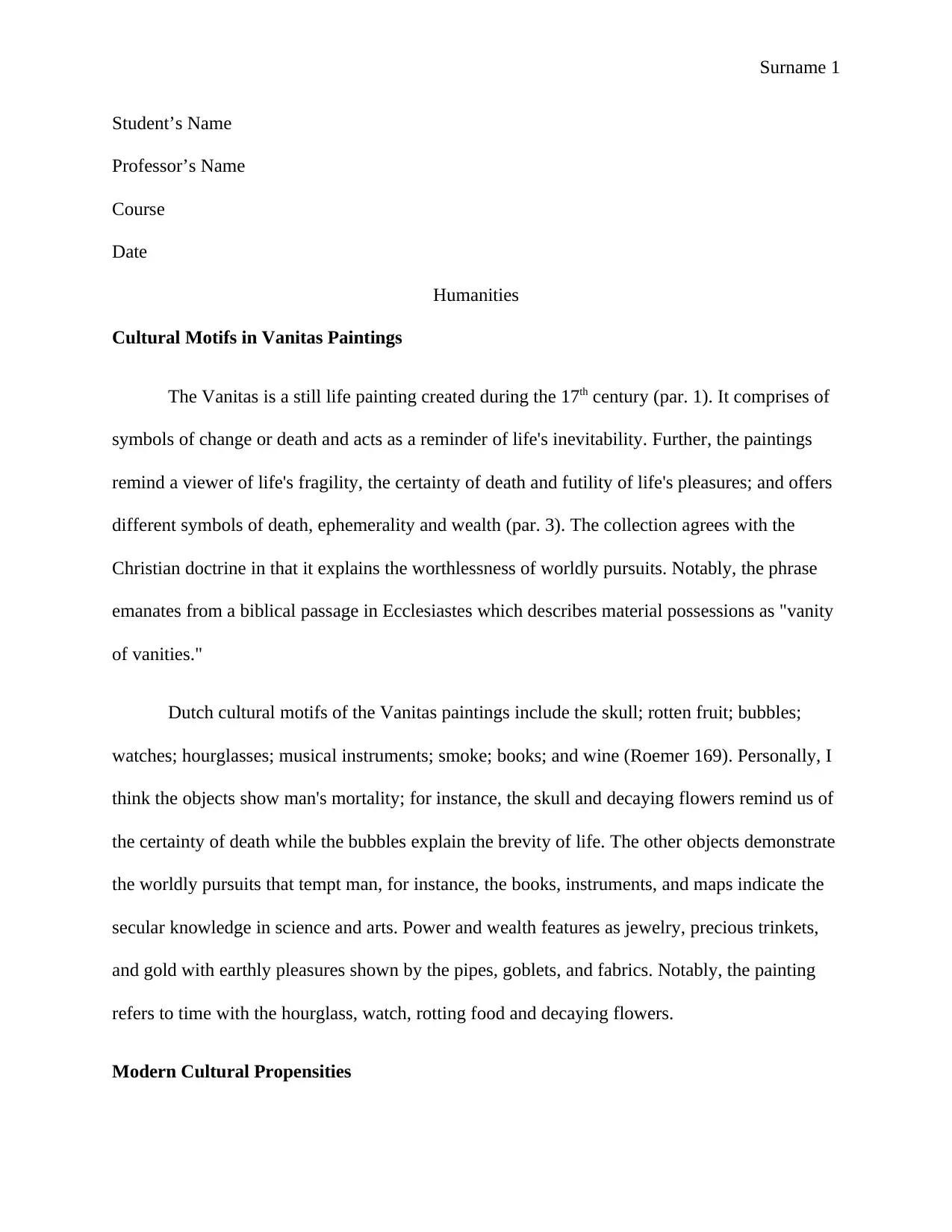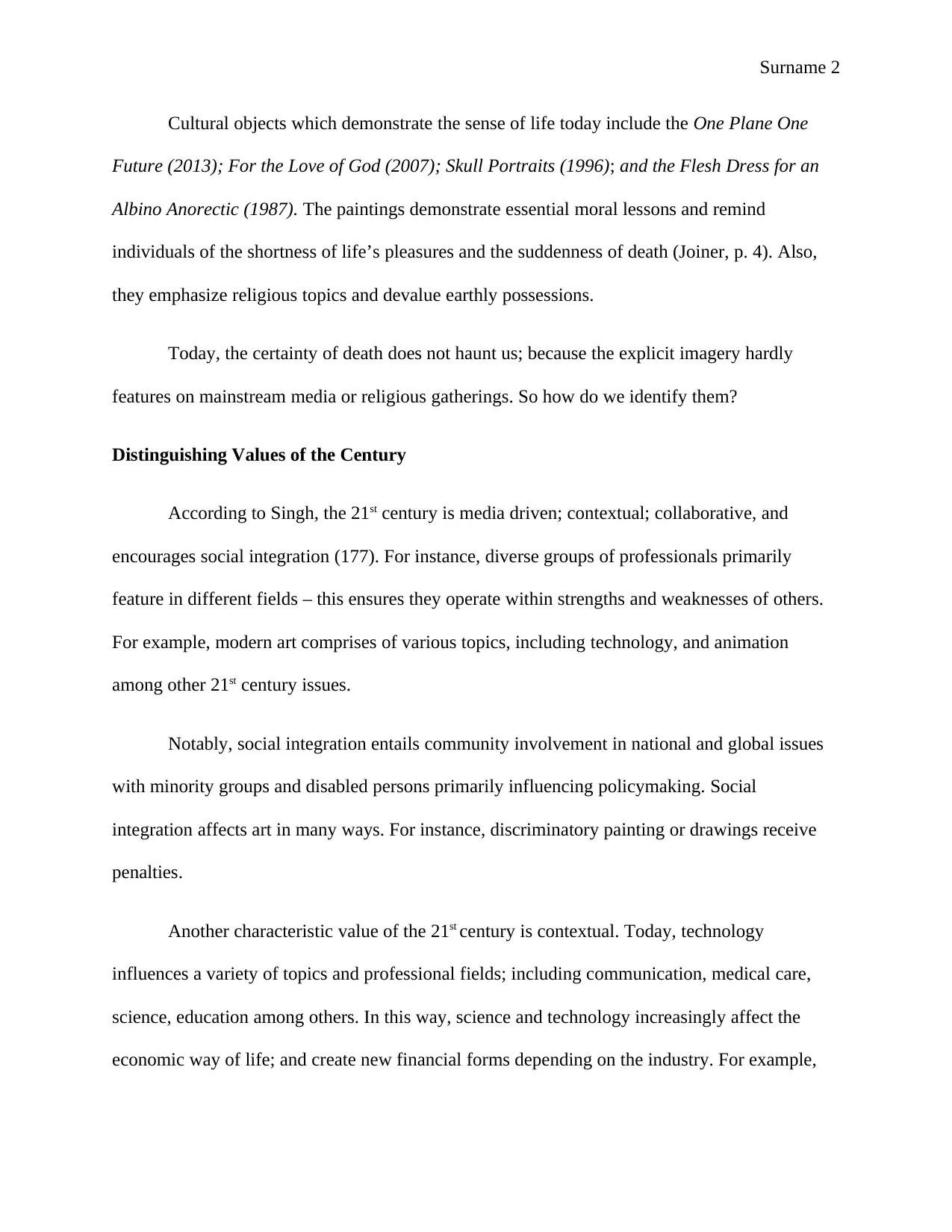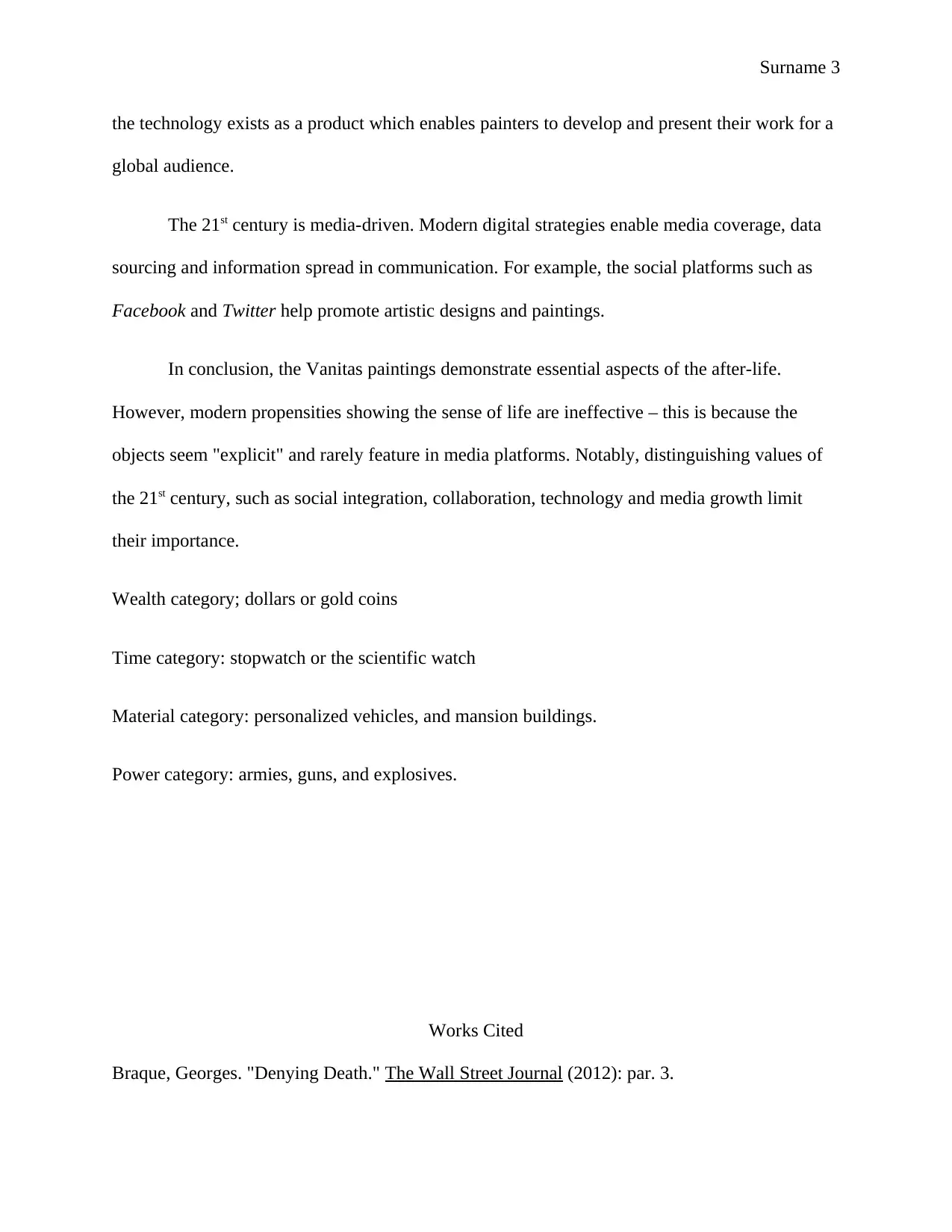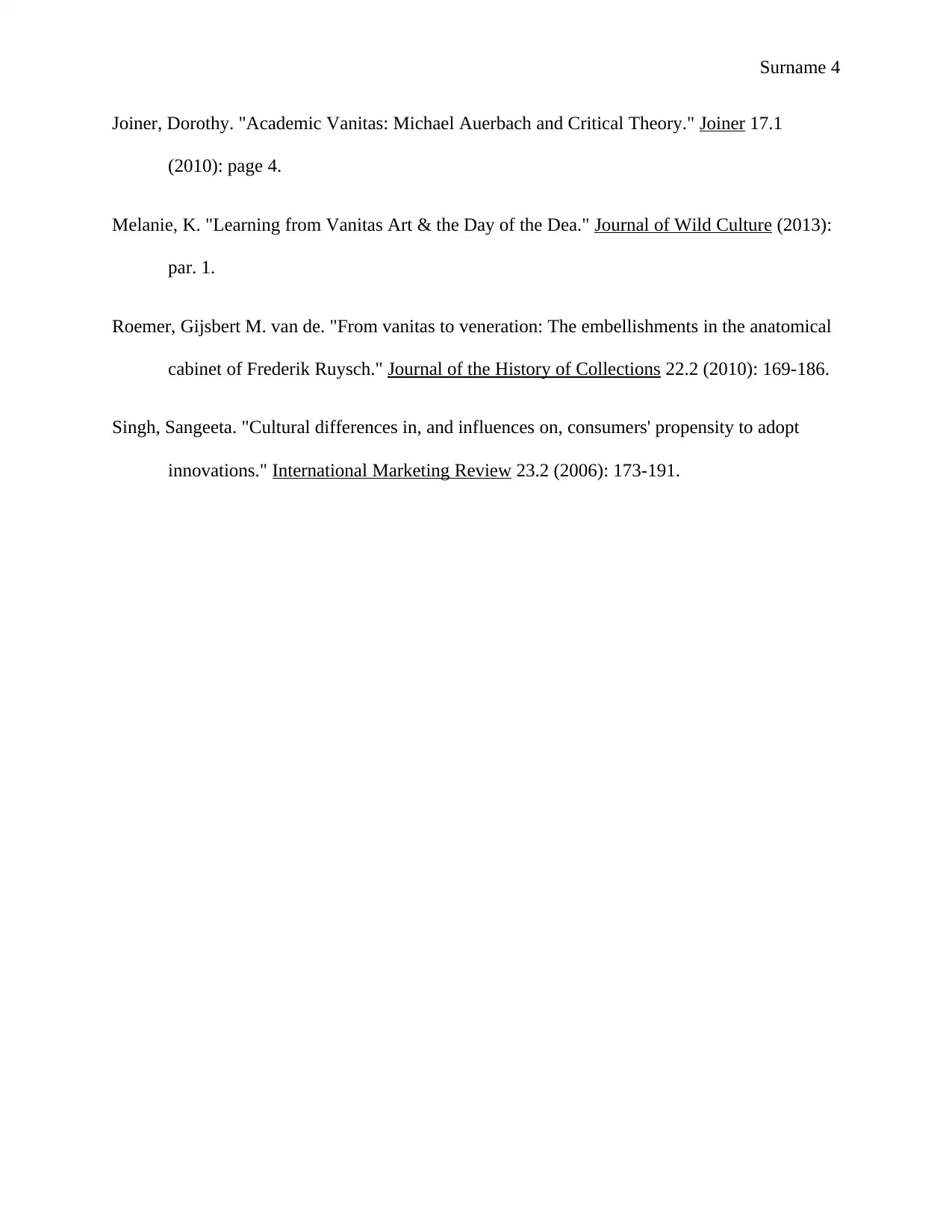Exploring Cultural Motifs in Vanitas Paintings: A Comparative Study
VerifiedAdded on 2023/06/14
|4
|878
|276
Essay
AI Summary
This essay delves into the cultural motifs present in 17th-century Vanitas paintings, exploring symbols of death, ephemerality, and wealth within the context of Dutch culture and Christian doctrine. It contrasts these historical representations with modern cultural propensities as demonstrated through contemporary art, highlighting the shift in how society perceives mortality and worldly pleasures. The essay further examines distinguishing values of the 21st century, such as social integration, technology, and media influence, and how these elements affect the expression and reception of art, ultimately arguing that modern approaches may lack the profound impact of Vanitas paintings due to their explicitness and limited presence in mainstream media. The analysis includes specific examples of both historical and modern artworks to illustrate these points.
1 out of 4




![[object Object]](/_next/static/media/star-bottom.7253800d.svg)